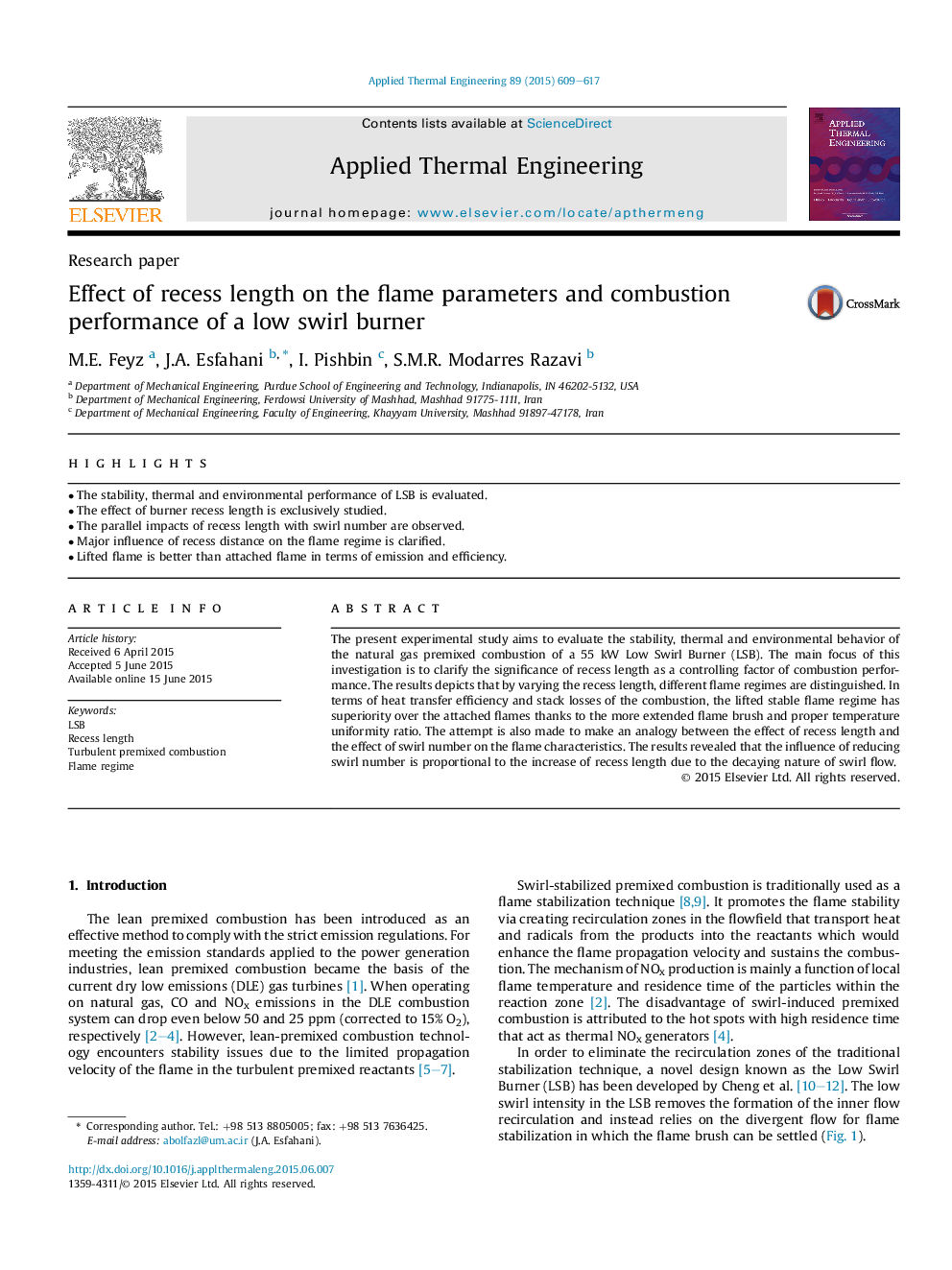| Article ID | Journal | Published Year | Pages | File Type |
|---|---|---|---|---|
| 645396 | Applied Thermal Engineering | 2015 | 9 Pages |
Abstract
The present experimental study aims to evaluate the stability, thermal and environmental behavior of the natural gas premixed combustion of a 55Â kW Low Swirl Burner (LSB). The main focus of this investigation is to clarify the significance of recess length as a controlling factor of combustion performance. The results depicts that by varying the recess length, different flame regimes are distinguished. In terms of heat transfer efficiency and stack losses of the combustion, the lifted stable flame regime has superiority over the attached flames thanks to the more extended flame brush and proper temperature uniformity ratio. The attempt is also made to make an analogy between the effect of recess length and the effect of swirl number on the flame characteristics. The results revealed that the influence of reducing swirl number is proportional to the increase of recess length due to the decaying nature of swirl flow.
Keywords
Related Topics
Physical Sciences and Engineering
Chemical Engineering
Fluid Flow and Transfer Processes
Authors
M.E. Feyz, J.A. Esfahani, I. Pishbin, S.M.R. Modarres Razavi,
